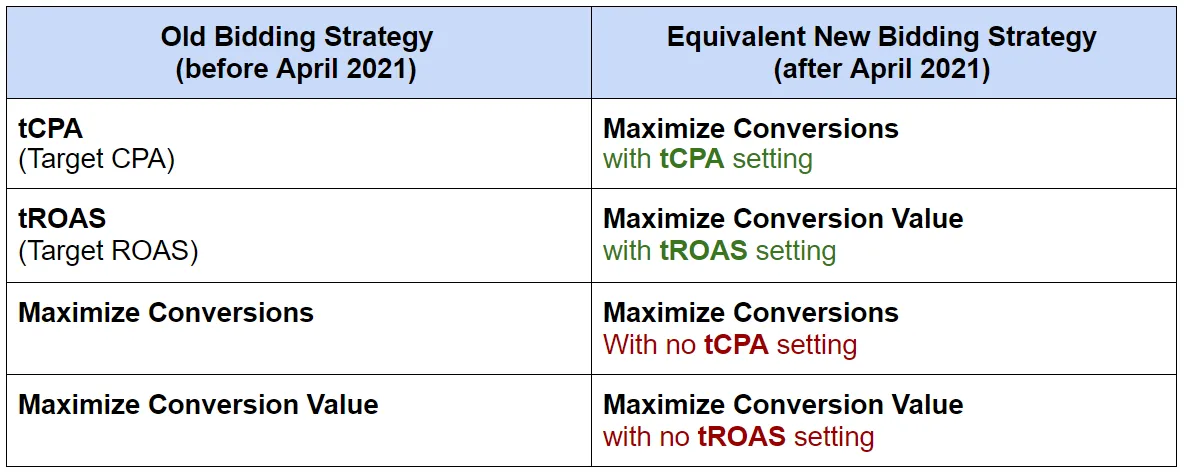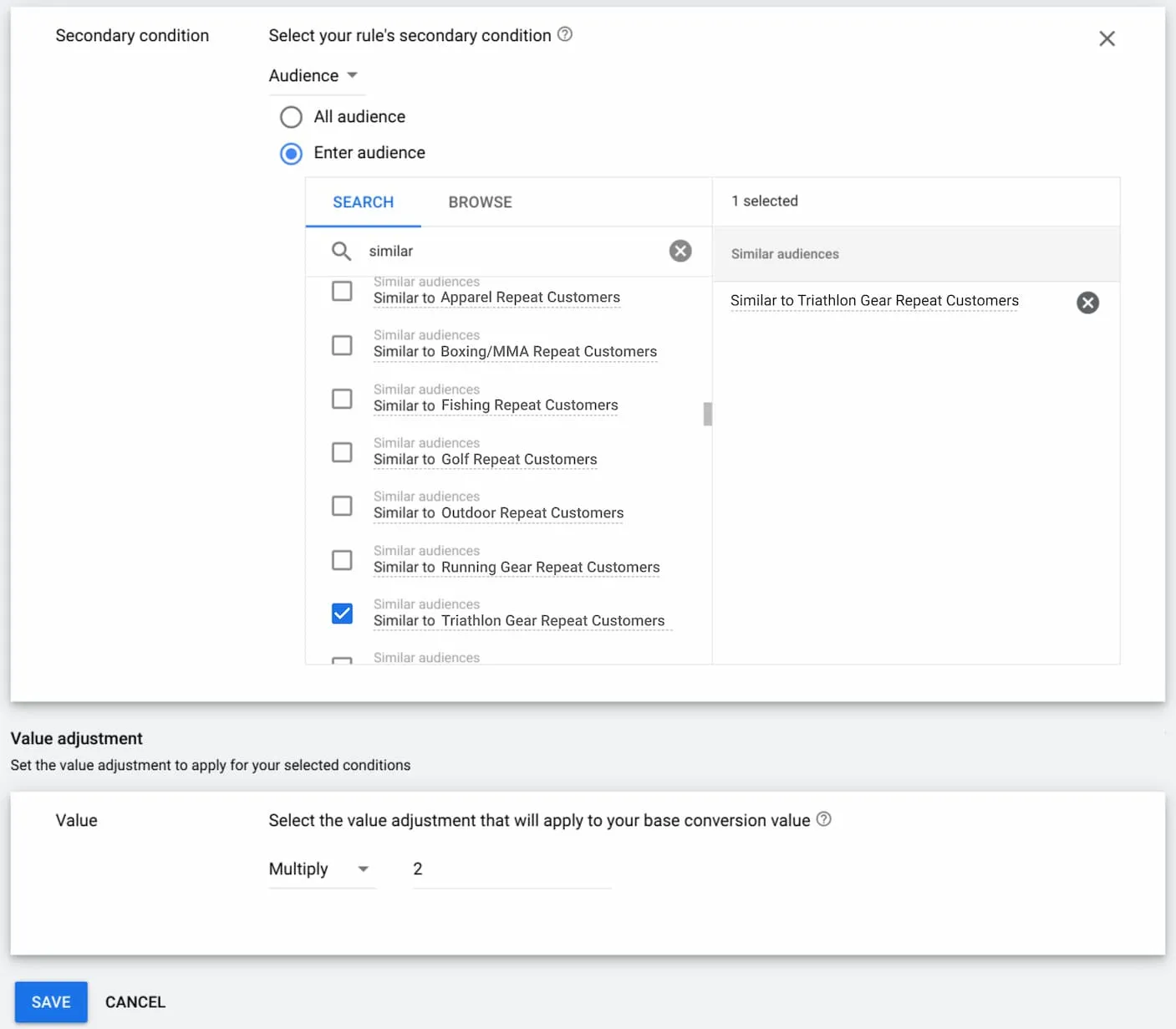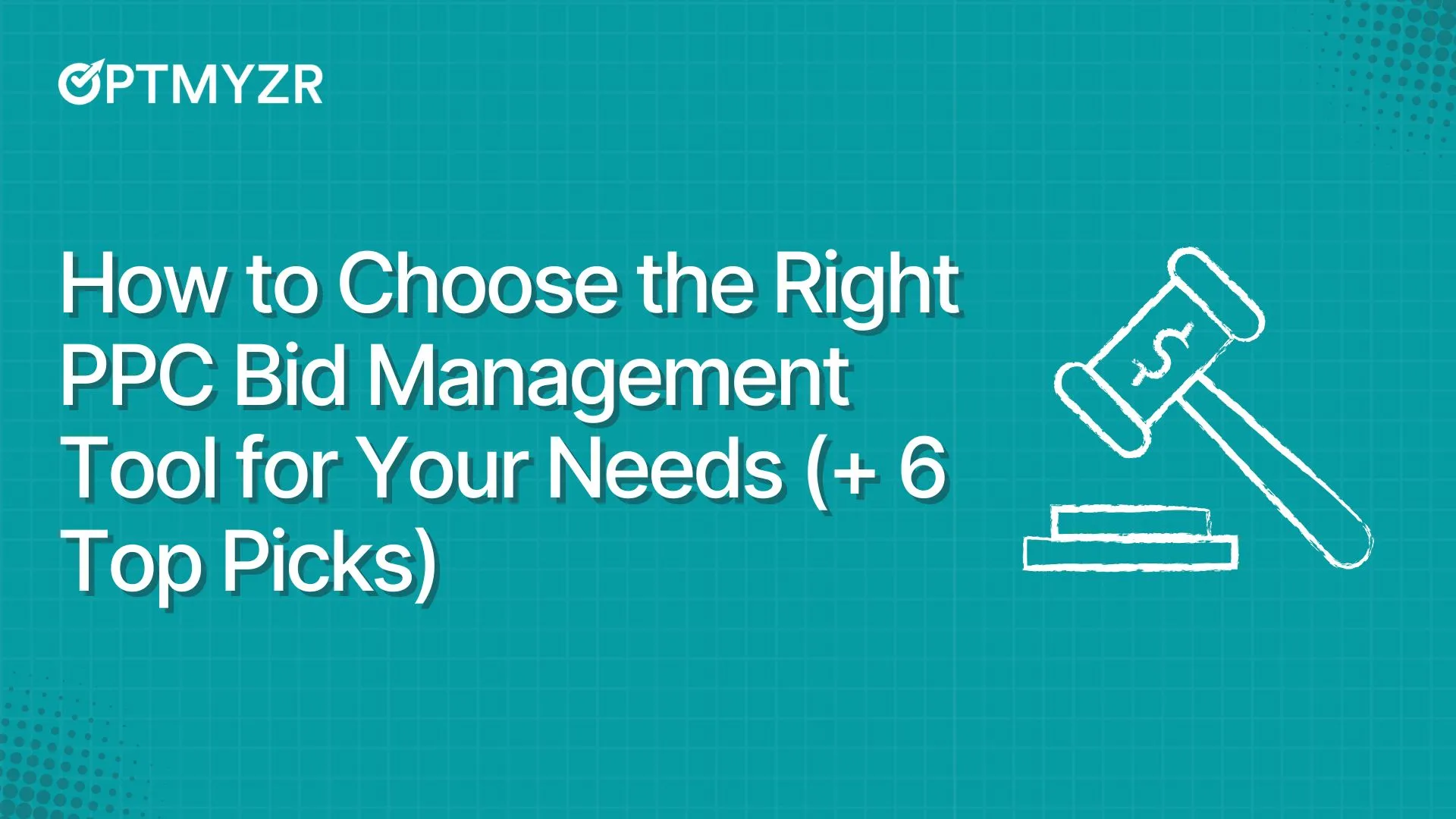A couple of weeks ago, Google’s developer blog carried a hidden announcement: Google Ads is going to retire their Target CPA (tCPA) and Target ROAS (tROAS) Smart Bidding strategies.
Starting in April 2021, these functionalities will be merged with other existing bid strategies.
For most advertisers, the only difference will be to switch to a bidding strategy with a different name with no impact on performance. But to be safe, you should review your account setup and monitor it for irregularities during this shift.
What is Google changing?
Starting from April 2021, advertisers will not be able to create outright tROAS or tCPA bid strategies. Instead, there will be two new fields: one to add a target CPA for the ‘Maximize Conversions’ strategy, and another for target ROAS for the ‘Maximize Conversion Value’ strategy.
That means tCPA and tROAS strategies will get fully absorbed by these new avatars.

Here’s what Google shopping specialist Kirk Williams has to say about this change:

What it means for advertisers
If you use Smart Bidding, you’ll have to start using a different setting to achieve your CPA and ROAS goals. Since advertisers who use Target ROAS for Smart Shopping campaigns are effectively already using a Maximize Conversion Value strategy with a tROAS, the search version will naturally start to look a bit like this.
This table shows the new settings that will be equivalent to the ones you may be using today:

One more thing. We know that the ads auction uses cost-per-click pricing, even with tCPA or tROAS. While Google’s automated bidding helps advertisers buy more of the clicks that have a predicted conversion rate or conversion value, combined with the CPC, it will help advertisers meet their targets for CPA or ROAS.
Creating budget constraints
How bidding strategies work depends on their constraints. So what can you do when both Target CPA/ROAS and your budget act as constraints?
In the past, Google recommended that advertisers with the old tCPA strategy and a constrained budget either remove the budget constraint (by increasing the budget), or switch to the old Maximize Conversions strategy. This obviously won’t work when tCPA and Maximize Conversions are merged and become the same.
Which means that after the transition, advertisers using Maximize Conversions with a tCPA setting and a constrained budget should either raise their budget or remove the CPA setting.

Why Maximize Conversions should not have a target CPA and a limited budget
PPC pro Martin Röttgerding has an interesting perspective on what might happen if advertisers run their bid strategy with two constraints:

A Maximize Conversions strategy is pretty set on buying as many conversions as possible. When you remove budget constraint, this goal will then turn to buying every single conversion, which is risky as you won’t have any guards against exceedingly high incremental costs per conversion.
If there is a limited budget for this strategy, then it will only keep buying the next cheapest conversion until the budget is spent. Introducing a target CPA constraint on the top will only set conflicting goals as the system could either buy more conversions for lower prices or fewer conversions closer to your target CPA.
When you introduce conflicting goals, you lose control over the system. It might decide to prioritize one goal today and the other tomorrow. And when your results aren’t what you expected, it’s hard to track down the reason as the system doesn’t tell you what it tried to do.

If you’re going to use Maximize Conversions with tCPA setting for a budget-constrained campaign, at the very least you need to monitor the quality of conversions after the switch.
Review your conversions
When a conversion is cheap, it means that not many advertisers value that conversion enough and so there’s little competition for it. And in turn, Google marks that low-value conversion and makes it available at a lower price. So when you use Maximize Conversions with no tCPA setting, you may be buying some of the conversions that are of less value to others.
The only way out of this? Help Google understand what you truly value in a conversion. Use the offline conversion import (OCI) to tell Google which conversions were more or less valuable to you. This will help their machines target more of the good kind of conversions.
What to do if you use Optmyzr
With the sunset of tCPA and tROAS bid strategies, we don’t expect to see much change in terms of how bids are managed. However, there are a few things we recommend Optmyzr users do to get ahead of things.
As a precaution, set up automated alerts to monitor performance anomalies. Use the budget optimization tools in Optmyzr to make sure that budget settings aren’t suffocating profitable campaigns.
As we wait for Google’s official response, we’ll keep updating our prebuilt strategies in the Rule Engine to help Optmyzr users manage this transition more easily.
Advertisers with existing rules using older strategies will need to start revising their setup. If you aren’t sure what to do, contact our support team or your account manager for assistance. We’ll also reach out to any users who’ll be impacted by these changes to let you know what to do as we get closer to the window when Google plans to remove these strategies entirely.








